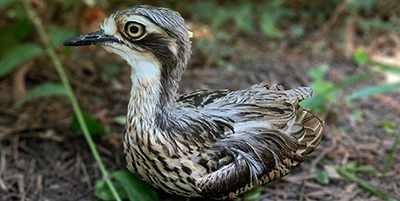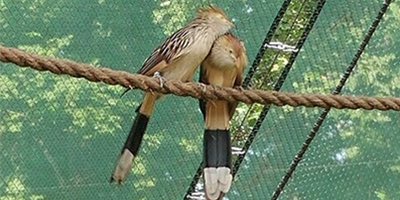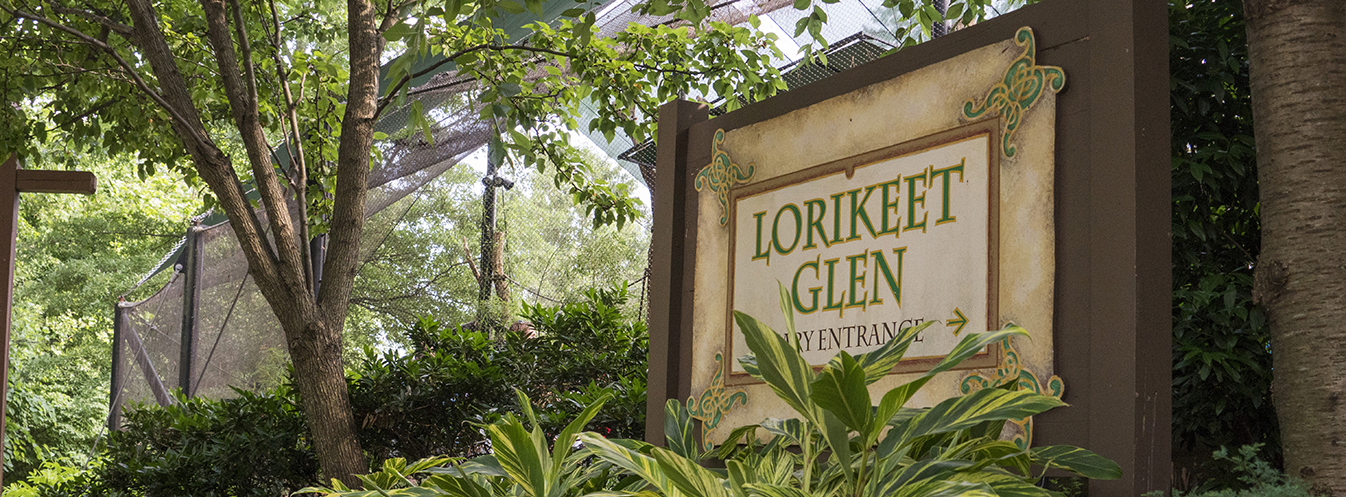Aviary Birds
Make your way to Lorikeet Glen to admire the stunning plumage of our lorikeets and other birds, including Pearl the rock dove!

Bush Thick-Knee Curlew
Bush thick-knee curlews are medium to large birds endemic to Australia, with strong black or yellow black bills, large yellow eyes and gray/stone-colored plumage. They are largely nocturnal, particularly when singing their loud wailing songs. Thick-knee refers to the prominent joints in the long yellow or greenish legs which have a ‘backwards’ ankle.

Guira Cuckoo
Guira cuckoos can be found in South America in Bolivia, Paraguay, Brazil and Argentina. They prefer drier trees, scrub savanna, scrub woodlands, and coastal dunes. These birds usually dine on insects, grasshoppers, cicadas, flying termites, frogs, eggs, and nestlings of small birds.

Lady Ross's Turaco
Turacos are the only birds to possess true red and green color. When you look at most birds, the color you are seeing is a reflection produced by the feather structure. The turaco's red pigment (turacin) and green pigment (turacoverdin) both contain copper. In fact, if you stirred a glass of water with a red turaco feather, the water would turn pink! Turacos are often considered frugivores but will also eat flowers, buds, young shoots, insects, moths, snails and slugs. Turacos are found in dense lowland and mountain forests of central and southern Africa. They prefer the canopy level of such forests and are agile climbers.
Conservation Fund
Since 2003, the SeaWorld & Busch Gardens conservation fund has provided well over $15 million in grants to over 1,200 organizations.



